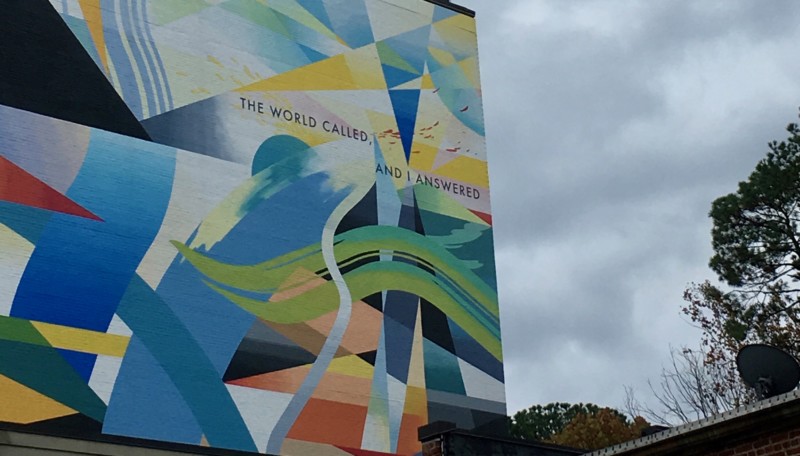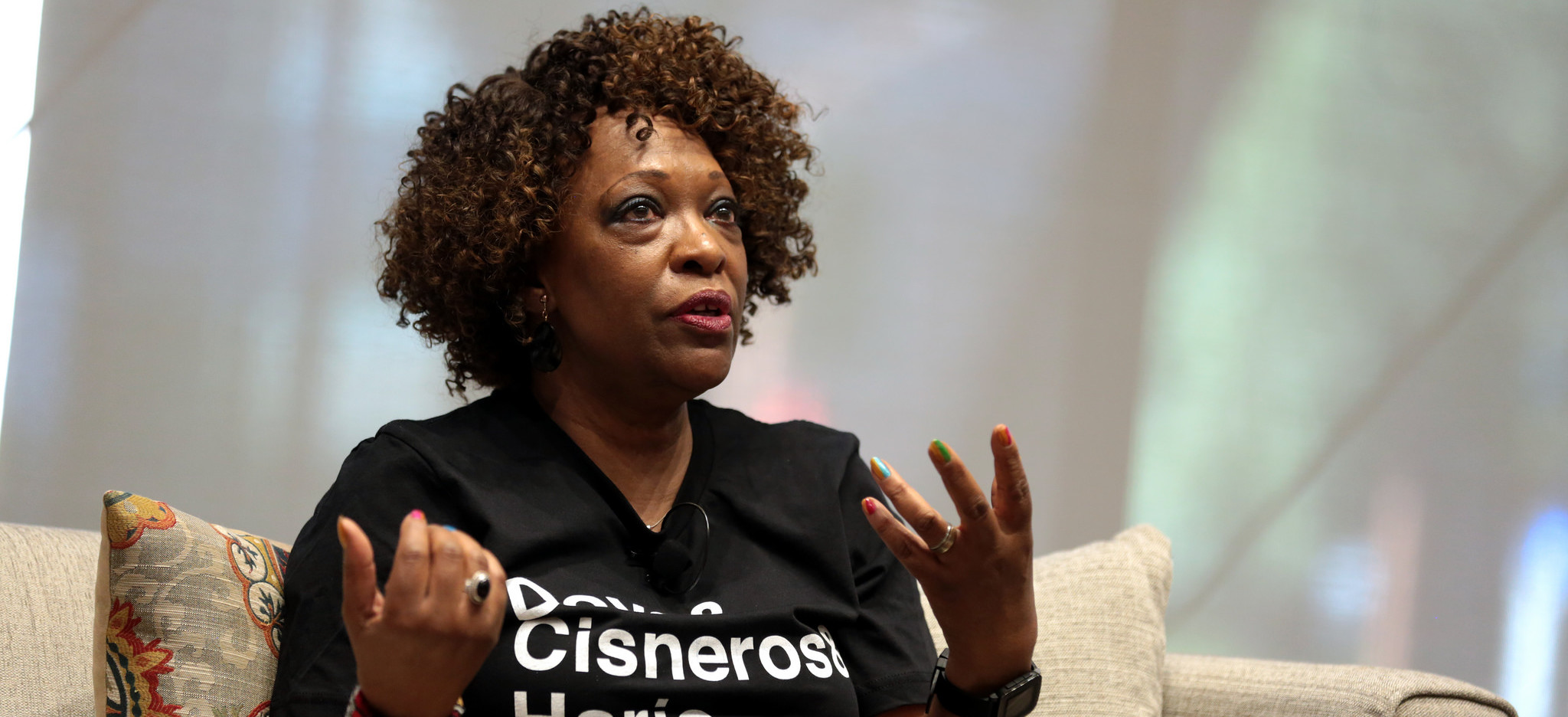Sign up for The Media Today, CJR’s daily newsletter.
RITA DOVE FEELS MOST ALIVE AFTER SUNSET. “It’s blissfully quiet during the night, in terms of the chatter that comes from the world,” she says. “I know that I’m not going to be disturbed.”
The New York Times Magazine recently appointed Dove—the author of numerous poetry collections and the recipient of many national awards, including a Pulitzer Prize, a National Humanities Medal, and a National Medal of Arts—to the position of poetry editor. Dove is the fourth poet to hold the position, which was created after Jake Silverstein became the magazine’s editor in 2014. She will succeed Terrance Hayes in July, at which time her poetry selections will begin to run alongside the magazine’s journalism. “I’m already beginning to be inundated with books from publishers,” says Dove. “But I can choose whatever I want.”
Dove was born in Akron, Ohio, and lives in Charlottesville, Virginia. Her poem “Testimonial,” from the collection On the Bus with Rosa Parks, is painted in full on a brick wall near the University of Virginia, where she has taught since 1989. A line from the poem runs across a larger, adjacent mural: “the world called, and I answered.”
A principled and intersectional curator, Dove relishes a diversity of perspective and voice—a commitment sorely lacking in many news organizations—and defends her work with zeal. During her tenure as poet laureate, Dove worked with a college classmate to bring eight members of the Crow Nation to the Library of Congress, where they read from their own work. Following the publication of Good Poems, an anthology edited by Garrison Keillor, Dove criticized the anthology and several reviewers for what one might generously call their myopia. “In Keillor’s entire book, all two hundred and ninety-four poems of it, I could find only three Black poets—all of them dead, no less, and the one woman actually a blues singer,” wrote Dove. “Nor is there a Hispanic or Asian-American or Native American presence to speak of.” Criticized by a reviewer in The New York Review of Books for her work on The Penguin Anthology of Twentieth-Century American Poetry, Dove responded to a list of “illogical assertions and haphazard conclusions,” including at least one she pilloried for “its condescension, lack of veracity, [and] barely veiled racism.”
What might poetry grant unsuspecting readers? The audience for journalism does not often encounter a poem alongside a story, though there are certain vital exceptions, from The New Yorker to Slate, where Robert Pinsky selected a quartet of poems “in response to the 2016 presidential election.” The New York Times Magazine, says Dove, “may contain many people who have never read or brushed up against a poem.”
Dove recently spoke with CJR by phone, after sunset, on what might be stirred in readers by pairing poetry with journalism. Her comments have been edited for length and clarity.
I would hope that what would emerge would be a kind of portrait or collage of American consciousness.
THE JOB ENTAILS presenting a poem from a recent book publication once a week. When I say recent, I mean it should be published in 2018—or at the very least, very late in 2017. Basically, I’m given free rein to choose whatever I want. And then I write a very short introduction to it. Not explaining the poem, but just setting the scene. That is produced every week side-by-side with whatever article happens to be on that page. People will, in fact, stumble across the poem.
It really came to me out of the blue. All I know is that The New York Times Magazine made the decision that they would like to try to bring poetry into the magazine. How they made their decisions consequently, I do not know. I simply got an email from Jake Silverstein. He asked me if I would do it. I did not ask him why they chose me.
NEWS: I’m thrilled to announce that a true legend, the one and only Rita Dove will be taking over as @NYTmag poetry editor from the incomparable Terrance Hayes when Terrance’s time at the helm is up this summer. Stay tuned…
— Jake Silverstein (@jakesilverstein) April 26, 2018
It is a one-year position. I think that’s a smart move. In order to keep it fresh, you really want to have a fresh eye. It was stressed to me that this was my view. No one was going to say, “Why did you pick that person?” In order to keep that kind of freedom, that freshness, every year would work.
My first feeling is not to consider what might constitute the audience’s blinders. In other words, to assume that they are going to be open—that’s for the first read. Something that moves me, I will immediately put into the pile to be considered later.
But there is something else to consider, and that’s something I’ve thought about a lot. That is to imagine what my audience’s lives might be like when they’re not reading my poem. What they bring to whatever venue or event or magazine. To imagine how much time or energy they can devote, and how to pull them in.
And then there are certain concerns. I know that, given the format of the magazine, it will be difficult to put any very long poems in there. I would also argue that this would not be the right vehicle for very long poems. The goal is to draw people into poetry, to have them read it and say, “Wow, what have I been missing?” not to immediately have them say, “Oh no, I can’t handle that, that’s too long.” Not that I’m going to say “25 lines or less,” but “The Waste Land” probably won’t, for technical reasons, format reasons, be in there.
My assumption is that you really cannot assume that the audience has any kind of difficulties with the work. I’ve found, just talking to kids, that we often underestimate our audience’s ability to get into something, or even to identify something. I’m not going to sit there and say, “OK, I should find poems that are kind of urban because this is New York, and everyone’s going to want to do that.” I’m not going to sit there and say, “I’m going to educate them, give them poems from the Midwest only.” The sole criterion is, how does it move us? Does it pull us out of our everyday trot?
I will be thinking about things like representation in terms of gender. I would hope that what would emerge would be a kind of portrait or collage of American consciousness. Which means, there would be poets from the west as well as the east coast as well as the middle, and men and women, and that would shake out, hopefully, to some kind of parity, representative of what the population is like at large. Poems from all races and all cultural ethnicities. But there will not be bad poems because I need a woman or I need an African-American. No. There are so many amazing, beautiful poems out there that we don’t get to see. That’s going to be my goal. Bring a few of them out there.

A line from Rita Dove’s “Testimonial,” on a mural in Charlottesville, Virginia. Photo by Brendan Fitzgerald.
My news consumption is a combination: the internet versions of several newspapers, then some internet places. It tends to be more liberal than conservative—let’s put it that way—and yet I also will look at Fox News every once in a while, because I think it’s very important to see what people are saying, what they believe on the other side. I tend to watch several news shows, some of the comedic interpretations like “The Daily Show.” And I watch German daily television programs, regular news, and they have really wonderful little features. I do that because I know German, and also because it’s very interesting to see another viewpoint of American happenings when they make it into the German news. Of course, there’s the usual kind of Facebook alerts that send me running to a story. Then I follow up by reading several different places in which it’s appeared.
When I take in news, I take it with a grain of salt. “All the news isn’t in yet. Let’s see what’s happening here. Have they corroborated that?” It raises in me humanitarian questions: What does this tell us about our society? About ourselves? Our reactions? I also recognize that there’s a great hunger—and I’m part of that hunger—to get the news. Though I’m not accepting it blindly, I do read it and take it in very differently from the way I take in poetry. It’s hard to explain.
You tell the story, but you tell the story that’s under the story. You bring to light human reactions to grander events, in the hope that people will recognize themselves in it.
Since last August here in Charlottesville, and other events, I think so many poets today have been asking, “What can we do, and can poetry even matter, and how can we speak against this?” As an African American and a woman, I’ve been asking myself this question and wrestling with this question as I write for a long time.
I’m still answering it. In general, I think the first thing we can do is to keep doing what we do, but to open our minds—think outside of our own little wheelhouse, and remember that there may be other views, ways of looking at it that we haven’t even considered. Start to listen. As a writer, that means not just going back and writing the poems that we know, but going out into the community and talking to people. Go somewhere you haven’t been before. Get uncomfortable. Go out with the notion that, “I want to know these people I live around. This is the world I live in.” Live a little bit. I sent my students out, and said, “Live first. Then you write.” You don’t “live to write.” That doesn’t make any sense. That’s not what any good writer does.
To me, I always thought this was essentially the way in which poets worked. We were the modern-day griots. You tell the story, but you tell the story that’s under the story. You bring to light human reactions to grander events, in the hope that people will recognize themselves in it. This is ongoing. My editorial positions have always been seen through that lens. There is a larger world than one’s own problems—whether one had chocolate that day or not.
ICYMI: Indian Country Today returns. Can it protect its editorial independence?
Has America ever needed a media defender more than now? Help us by joining CJR today.



